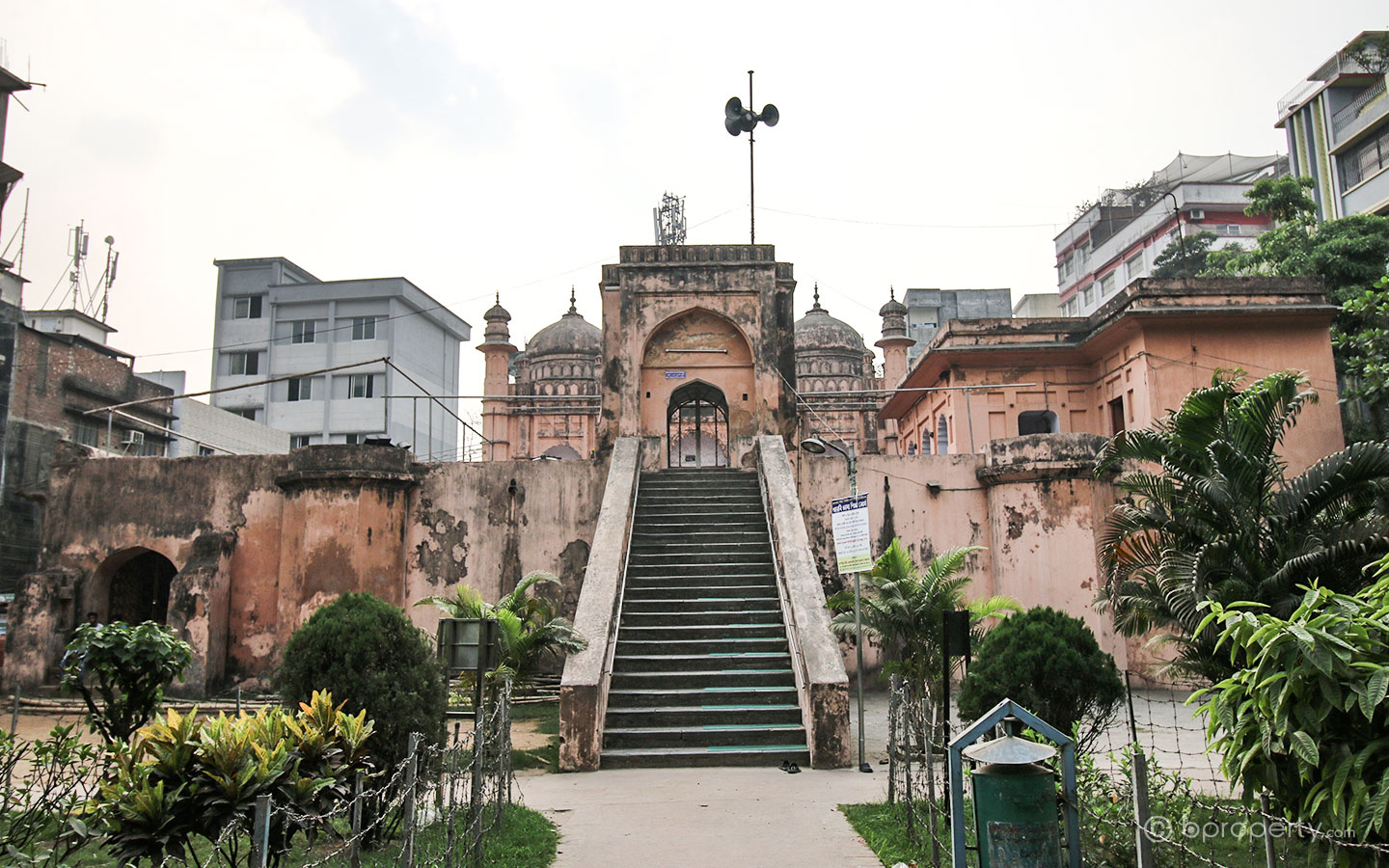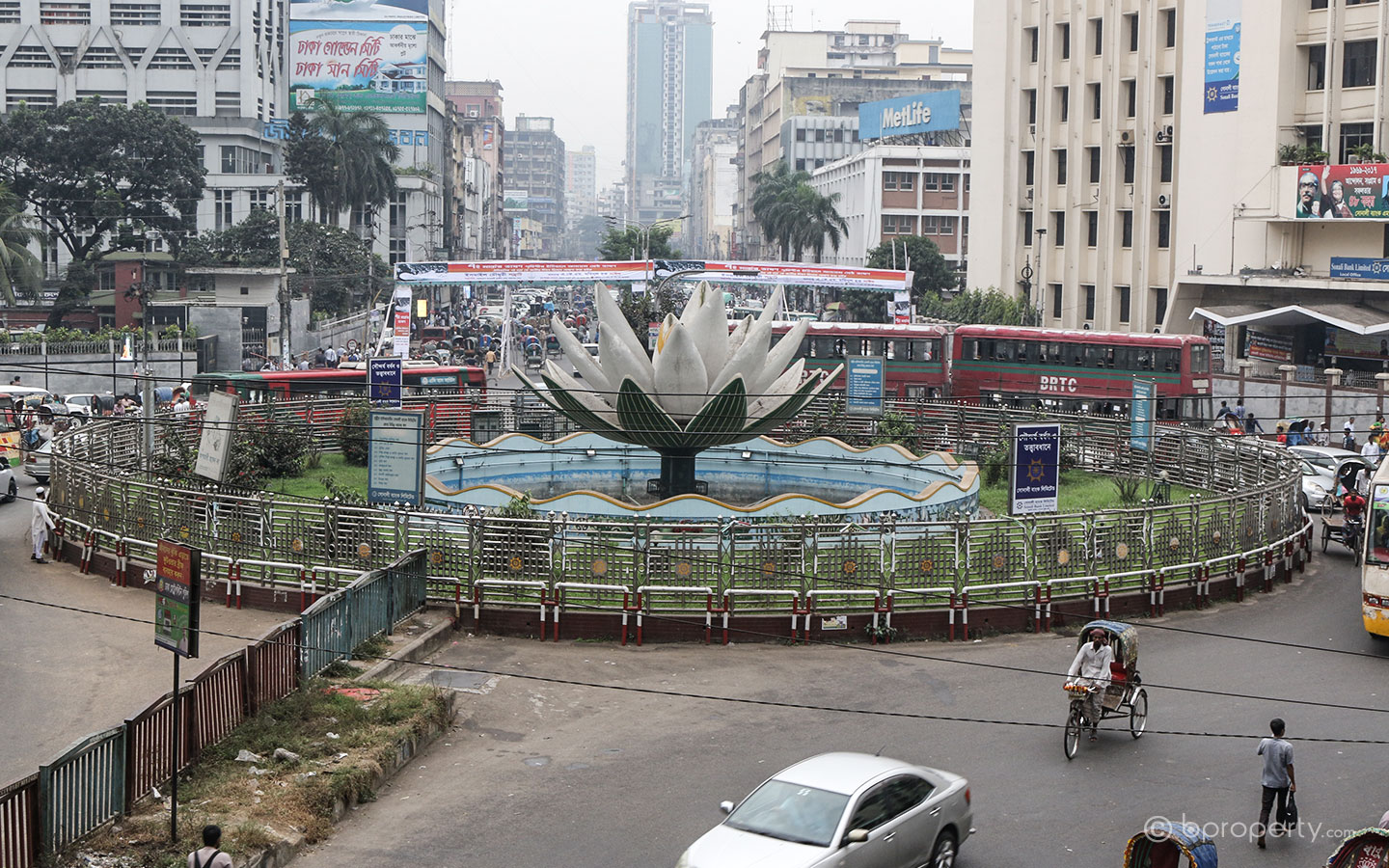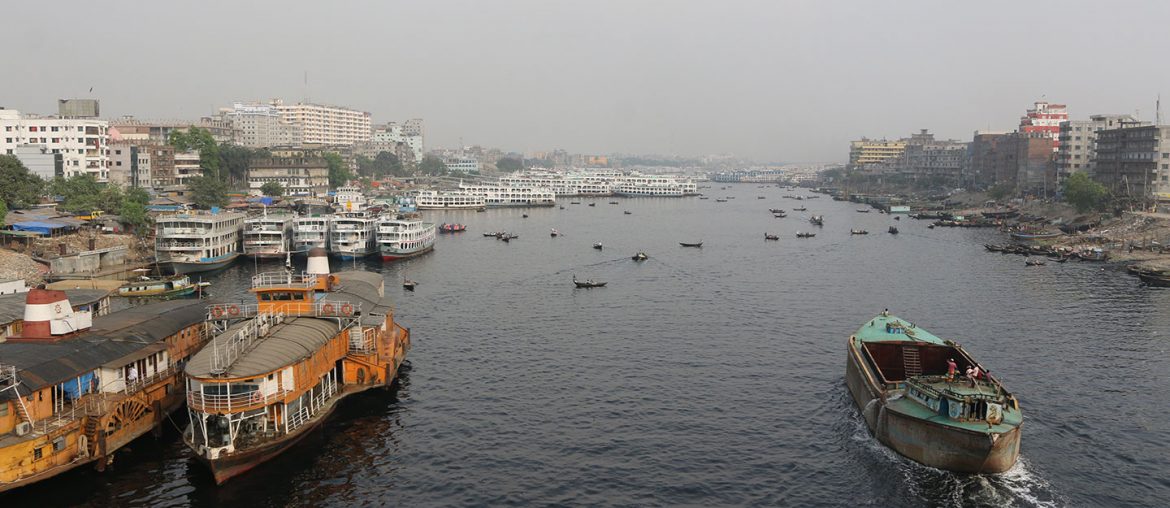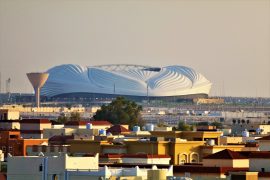Many people don’t realize how old Dhaka really is. A large number of people have been living in this vicinity for more than a thousand years. Dhaka started out as a small settlement on the banks of Buriganga River way back in the 7th century. It can be difficult to imagine the population of Dhaka city as anything other than densely packed. But even after 4 centuries of its establishment, the settlement consisted of only 52 bazaars and 53 streets. The megacity we know today, came after rigorous expansion of Dhaka city’s borders. In today’s article, we’ll take a quick look at the historical growth of Dhaka and the development of its real estate.
Rise of Dhaka as a City

Dhaka first emerged as a thriving city during the Mughal period. Making Dhaka the capital of Bengal was the catalyst for its rapid growth. Even though Dhaka was already a budding city during Afghan rule, it truly came into its own during the Mughals period. Dhaka became an important metropolitan, attracting traders and dignitaries from all over the world. The area known today as ‘Puran Dhaka’ was the focal point then. As the newly minted capital, several new development projects were initiated to improve the city. Dhaka stretched for 20 kilometers in length and 12 kilometers in breadth, hosting around a million people at its apex. It was divided into a number of neighborhoods, comprising of high-class and low-class residential areas. There was also designated shopping and administrative areas that strengthened the growth of Dhaka.
From the Old Fort (central jail), expansion of Dhaka went westward to Sarai Begampur and northward to Badshahi Bagh. The river flowed through many parts of the city, and river-side land was the most valuable real estate. However, those were reserved only for the elites of the empire. Areas such as Bakshibazar, Rahmatganj, Chaudhury Bazar, and Becharam Dewri were the best residential areas available to affluent citizens. Localities nearby Tanti Bazar and Shankhari Bazar were lower class residential areas. However, there were numerous bungalows for Europeans located in the Tejgaon area, thanks to the establishment of factories there. The area was considered a high-value commercial as well as residential zone
Colonial Period

Much of the glamour and prestige of Dhaka was lost after the Mughals rule. The city dramatically shrank, both in size and population. Dhaka was only about 21 Sq. Kilometers in size with a population of around 52,000 at its lowest point of glory. It wasn’t until the second half of the 19th century that the city saw a resurgence. Instead of focusing on the expansion of Dhaka, the British concentrated on transforming it into a modern city. Metal roads, open spaces, street lights, piped water supply, and sewage system, replaced the medieval & ineffective infrastructure. The area around Victoria Park was greatly developed. It became a prized high-class residential area similar to riverfront properties. Victoria Park, better known today as Bahadur Shah Park, is still one of the most famous parks in Dhaka.
It was also during the British rule that the Dacca Municipality was established. Also, a ‘Committee for improvement of Dacca’ was established to organize better and develop the city. As a result of both, the inner city saw widespread rebuilding activities of houses and roads. However, this development of Dhaka was mostly unplanned. The expansion of Dhaka went northward from Fulbarina, Nawabpur, and Chawkbazar. Areas around Ramna, Shahbag, Paltan, Kakrail became the most valuable real estate during the latter half of the colonial period.
Capital of East Pakistan

Dhaka Improvement Trust (DTI) was created in the 1950’s to streamline the planning and development of Dhaka. Many of the rivers and canals that once flowed through the middle of Dhaka were starting to vanish during this time. The landscape of the city was undergoing rapid changes as more and more land grabbing and expansion ensued. The growth of Dhaka has always depended on the physical configuration of the landscape. Therefore, the only logical direction for the expansion of Dhaka was north. Motijheel, which was once a desolate land filled with marshes and swamps, became the central commercial zone. Most of the administrative and financial institutions were based in the area.
The rising population and the ever-increasing demand led to the formation of several new residential areas in Dhaka. Elites of the city began building houses in Dhanmondi, and it became the most valuable real estate for residence. Development of Dhaka, particularly Mirpur road and the highlands around it helped the government create the first planned residential area in Mohammadpur. Creation of several satellite towns quickly followed this. Gulshan Model Town was the first one; Banani, Uttara and Baridhara Model Town came after them. They were designed to accommodate middle-class citizens of Dhaka.
Independent Bangladesh

Dhaka experienced a massive boom after the country gained independence, both in terms of area and population. DIT was re-christened as RAJUK, and many urbanization projects took place under its banners. The expansion of Dhaka continued with the filling up of swamp and marshland to satisfy the growing demand for housing. It largely followed plans left by the Mughals. Private land developmental projects began to play a major role in the creation of residential areas for the city. Areas such as Malibagh, Banasree, Rampura, and Mirpur began to take shape as promising places to live in Dhaka. Most of the growth of Dhaka was organic in nature, and very little intervention from the government took place.
It was also during this time that land prices around Gulshan and Banani started to skyrocket. This was due to the existing infrastructure from the past and the development of Gulshan and Banani as financial centers. The residential area of Niketan came into existence to accommodate the growing number of people interested to live in Gulshan. Many new stylish and modern shopping malls as well as recreational facilities were constructed in Banani and Gulshan. Those areas quickly became posh areas in just a matter of a decade. The tail-end of the millennium saw a drastic change in housing trends too. ‘Apartment buildings’ began to take prominence as the preferred choice for homes. This, along with massive infrastructure reforms and initiation of new projects signaled a great change in life in Dhaka.
Dhaka Megacity

The rapid growth of Dhaka has propelled the metropolitan to the ranks of a megacity. It is now the 11th largest megacity in the world. High-rise buildings have become necessary to accommodate the vast population of Dhaka. Most of the citizens, however, are migrates to the city. According to Power and Participation Research Centre (PPRC), only 21% of residents in urban Dhaka were born here. As such, urbanization of Dhaka is moving at an accelerated pace. The expansion of Dhaka is now focused eastward, and a host of new development projects are taking place in areas such as Purbachal and Uttar Khan. These areas, and others will be the frontier for a more global Dhaka. The core city only comprises 30% of the entire greater Dhaka. This eastern push is in line with the decentralization of Dhaka and expanding the reach of the core city.
For now, flats in Bashundhara R/A, Dhanmondi, Gulshan, Banani, and Uttara are prized the most; while apartments in Banasree, Rampura and Mirpur present an alternative to those who are on a tight budget. The recent unveiling of several flyovers in the city has increased mobility to these areas. And as a result, the demand for housing in these locations has also been rising. And with Dhaka being on the cusp of becoming a global city, more people are investing in real estate now to ensure their place in it.
The size of Dhaka is the largest it has ever been. Continuous expansion and growth of Dhaka, as well as a steady development in recent times, have driven the city to new heights.
Which era do you think has brought the most success for Dhaka?




